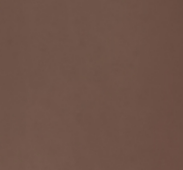AG88963GS20
Category:
E-mail:
Whatsapp:
-
Powder Coating: An Overview of a Versatile Finishing Process
Powder coating is a popular finishing process that has gained widespread acceptance in various industries due to its durability, aesthetic appeal, and environmental benefits. Unlike traditional liquid paints, powder coating involves the application of a dry powder that is then cured under heat to form a hard, protective layer. This article explores the fundamentals of powder coating, its advantages and disadvantages, the application process, and its diverse applications in modern manufacturing.
Understanding Powder Coating
At its core, powder coating is a method of applying a decorative and protective finish to a wide range of materials, primarily metals. The powder used in this process consists of finely ground particles of pigment and resin, which are electrostatically charged and sprayed onto the surface of the object to be coated. The charged powder adheres to the surface until it is heated in an oven, where it melts and fuses into a continuous film.
This technique can be applied to various products, from automotive parts to household appliances and outdoor furniture. The versatility of powder coating makes it an attractive option for manufacturers looking to enhance the performance and appearance of their products.
Advantages of Powder Coating
One of the most significant advantages of powder coating is its durability. The cured powder finish is highly resistant to chipping, scratching, fading, and wearing, making it an ideal choice for items that are exposed to harsh conditions. Additionally, powder-coated surfaces are less likely to show fingerprints and smudges, maintaining a cleaner appearance over time.
Another advantage is the environmental friendliness of powder coating. Unlike traditional liquid paints that contain volatile organic compounds (VOCs), powder coatings emit little to no harmful chemicals into the atmosphere. This characteristic makes powder coating a more sustainable option, aligning with the growing demand for eco-friendly manufacturing processes.
Powder coating also offers a wide range of color options and finishes. Manufacturers can choose from a vast palette of colors and effects, including matte, glossy, textured, and metallic finishes. This flexibility allows for greater creativity in product design and can enhance the overall appeal of the finished product.
Disadvantages of Powder Coating
Despite its numerous advantages, powder coating does have some drawbacks. One of the primary limitations is the requirement for specialized equipment. The electrostatic spray guns and curing ovens necessary for powder coating can be expensive, which may deter small businesses or startups from adopting this method.
Additionally, the powder coating process may not be suitable for all surfaces. Certain materials, such as plastics and some types of wood, may not withstand the high temperatures required for curing. This limitation necessitates careful consideration when selecting materials for powder coating.
Another potential disadvantage is the difficulty in achieving uniform thickness. While powder coating can provide a consistent finish, achieving the desired thickness across complex shapes or intricate designs may require additional expertise and adjustments in the application process.
The Powder Coating Process
The powder coating process can be broken down into several key steps, each critical to achieving a high-quality finish.
1. Preparation: The surface of the item to be coated must be thoroughly cleaned and prepped. This step often involves removing any dirt, grease, rust, or old paint through methods such as sandblasting, chemical cleaning, or washing. Proper surface preparation is essential for ensuring good adhesion of the powder.
2. Application: Once the surface is prepared, the powder coating is applied using an electrostatic spray gun. The gun charges the powder particles, allowing them to adhere to the grounded surface of the object. Care must be taken to ensure even coverage, especially in areas with complex geometries.
3. Curing: After application, the coated item is placed in a curing oven. The heat causes the powder to melt and flow, forming a smooth and even layer. The curing process typically takes place at temperatures between 350°F and 400°F (about 175°C to 200°C) for 10 to 30 minutes, depending on the type of powder and thickness of the coating.
4. Cooling and Inspection: Once the curing process is complete, the item is removed from the oven and allowed to cool. After cooling, the finished product is inspected for any defects or inconsistencies in the coating. Any necessary touch-ups can be made at this stage.
Applications of Powder Coating
The applications of powder coating are vast and varied, making it a popular choice across multiple industries.
In the automotive industry, powder coating is often used to finish wheels, frames, and other components, providing a durable and attractive finish that can withstand the rigors of daily use.
In the architectural sector, powder coating is frequently applied to window frames, doors, and railings, enhancing both aesthetics and protection against the elements.
The furniture industry also benefits from powder coating, with outdoor furniture being particularly suited to this process due to its resistance to UV rays and moisture.
Additionally, many household appliances, such as refrigerators and washing machines, utilize powder coating for both functional and decorative purposes.
Conclusion
Powder coating is a highly effective and versatile finishing process that offers numerous benefits, including durability, environmental friendliness, and aesthetic appeal. While there are some limitations, the advantages often outweigh the drawbacks, making it a preferred choice for many manufacturers. As industries continue to prioritize sustainability and product quality, the demand for powder coating is likely to grow, solidifying its role as a key player in modern manufacturing.
Key words:
AG81572GT10
Thermoplastic powder coating
Previous:
Next:
Message
You can leave comments and suggestions here, and we will reply in time.
Case

Fenglu Aluminium

Huajian aluminium

LPSK

Huachang Aluminium

Zhongwang Aluminium

Dongliang Aluminium

Panpan Aluminium

Nanping Aluminium
Related Products

BM28649GS20

BM29755GS20

BM79905GS20

BM48084GT10



